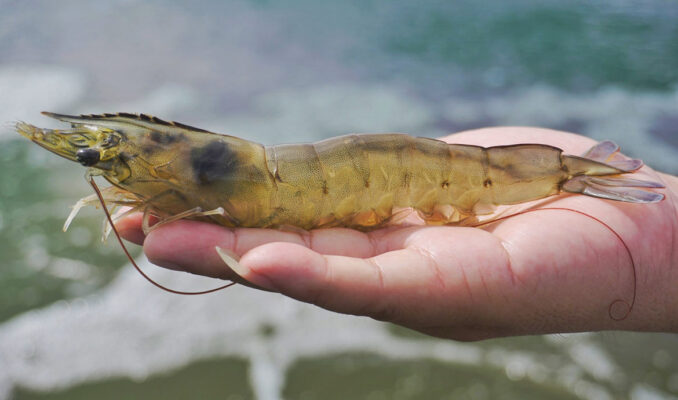
In shrimp farming, environmental factors have been increasingly affecting the growth and development of shrimp, especially before the current cold weather changes. Therefore, shrimp farmers need to capture information and have specific solutions to protect farmed shrimp from damage, which contributes to improving the efficiency of the farming crop.
According to statistics from Ca Mau Department of Agriculture and Rural Development, up to this point, the total area of shrimp farming in the province is 279,648 hectares on 3 subjects of black tiger shrimp, white-leg shrimp (Litopenaeus vannamei) and giant freshwater shrimp. Due to the influence of weather, the shrimp farming environment has changed, causing damage to farmed shrimp, especially intensive and super intensive farming (343 ha), extensive black tiger shrimp (1,872 ha).
The cause is determined by the professional industry, due the cold season, the temperature is somewhat lower, the wind starts to become stronger and is accompanied by a bit of dryness. Shrimp farmers are somewhat concerned because shrimp are thermogenic animals, sensitive to temperature changes in the environment. Accordingly, the suitable temperature for shrimp to grow is from 28-30 o C, if the temperature is too high or too low, it will affect the growth and development of cultured shrimp in general, shrimp will eat less or stop eating, even die, which leads to the loss rate and affects the efficiency of the shrimp farming.
Engineer Le Thi Tho, an officer of the Ca Mau Agricultural Extension Center, said: “When the temperature drops too low, disease signs such as red body and white spots will appear, creating favorable conditions for those types of viruses to develop, which will cause damage to shrimp.” reared through morphologies such as tail worn out, shrimp feeler loss…”.

Accordingly, Engineer Le Thi Tho recommended people to reinforce the pond bank firmly, avoid any leaks, ensure the water level is maintained at 0.5 m or more, and need to periodically add bio-organic fertilizers to create and maintain natural food in the pond, add CaCo3 lime, Dolomite lime to enhance minerals in the water to ensure shrimp always hard shell. Correspondingly, the periodic addition of probiotics throughout the growing season to stabilize the environment and clean the square bottom of the culture.
In order for shrimp farming in the cold season to be effective, people need to determine that water is the main habitat of shrimp, so if water is not treated properly, it will easily spread pathogens in the water of the farming area; In addition, supplying and draining water at the wrong time (such as water temperature is too cold) also affects the growth of cultured shrimp.
Engineer Le Thi Tho further noted: “Another important issue in cold season shrimp farming that people need to pay attention to the problem of natural food (TATN) in the pond. When the temperature drops, there is little sunlight or the sunlight is not harsh, which will reduce the growth of algae, thereby affecting the amount of TATN in shrimp ponds. So, in this case, farmers need to supplement TATN by adding probiotics and trace minerals to maintain nutrition for a stable pond environment.”
In intensive and super-intensive shrimp farming, the feeding and management of feed in the cold season must also be reasonable, because if this step is not done well, the excess of feed will cause the water quality to deteriorate. It’s easy to generate toxic gases such as H2S, NH3 … make shrimp difficult to molt, activate shrimp gills, create conditions for bacteria and fungi to invade which will affect the health of shrimp farming.
Engineer Le Thi Tho recommends that the input water preparation must be technically correct. The water in the nursery pond must be from 0.7 – 0.8 m and in the rearing pond from 1.2 – 1.5 m. Accordingly, when the temperature is low at night, oxygen in the pond will be low, so shrimp farmers need to increase fan operation; In the afternoon, shrimp often molt, so pay attention to increase oxygen for shrimp, increase probiotics to help clean the pond environment. Due to cold weather, shrimp metabolism decreases, so shrimp farmers need to reduce the amount of food by about 20% and should maintain the pH index in the appropriate range of 7.5 – 8.5.
The good management of shrimp farming in the cold season not only improve farmers’ farming models effectively, increasing income for families, but also contributes to meeting the source of raw materials for domestic and international consumption markets when the Lunar New Year approaches.

 Tiếng Việt
Tiếng Việt Indonesia
Indonesia